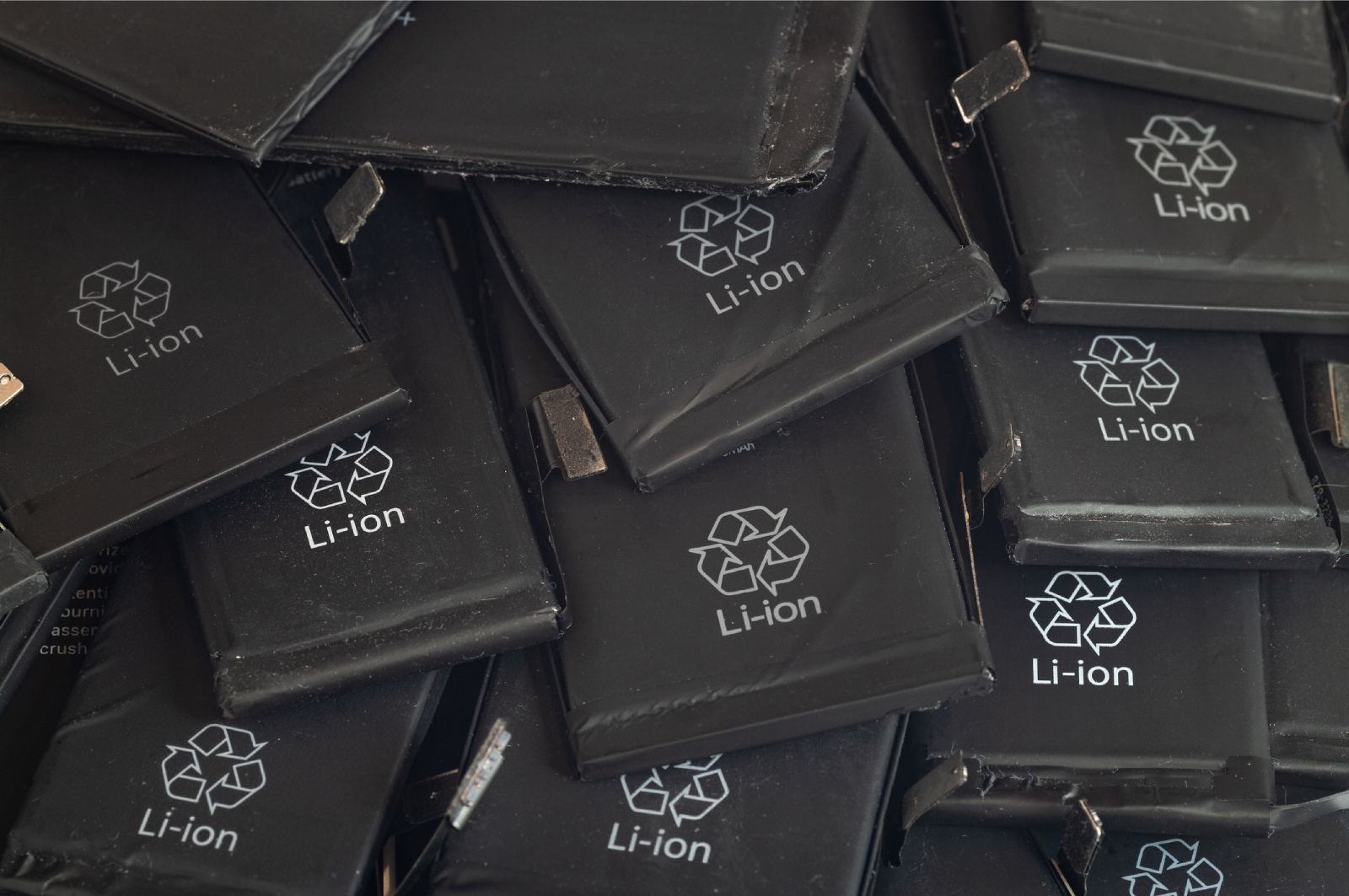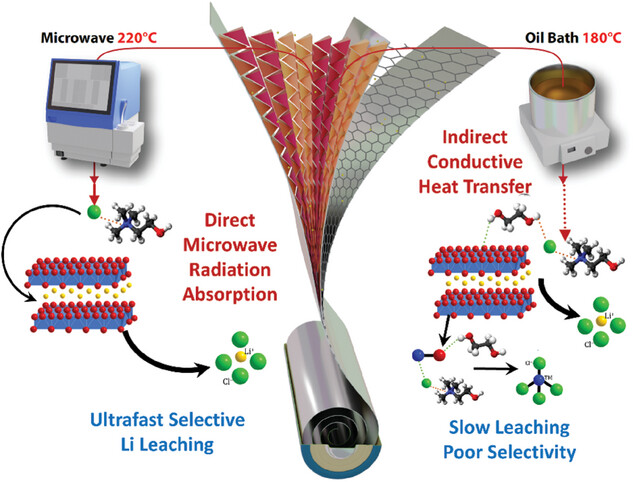Revolutionizing Lithium Battery Recyling

Date

Direct transfer of microwave radiation to the reaction media leads to ultrafast Li extraction in the DES. In conventional heating methods, e.g., oil bath, the reaction is slower due to poor heat conduction to the reactants.
Source: www.OnlineLibrary.Wiley.com
The Importance of Recycling Metals in Lithium Batteries for Refractory and Precious Metal Processors
The rapid growth of the electric vehicle (EV) market and global net-zero goals have dramatically increased the demand for lithium-ion batteries (LIBs). These batteries, essential for powering everything from smartphones to large-scale energy storage systems, rely heavily on critical metals such as lithium, cobalt, and nickel. The increasing demand has put pressure on the supply chains of these metals, often referred to as the “white gold” of clean energy. As a result, efficient recycling methods for LIBs are becoming increasingly important, not just for the environment but also for processors of refractory and precious metals like D Block Metals.
The Challenge of Metal Recovery from Spent Batteries
Traditional recycling methods for lithium batteries often involve environmentally harmful processes and low recovery rates. For instance, conventional methods use harsh acids and result in a recovery rate of less than 5% for lithium. This low efficiency is primarily due to contamination and loss during the recycling process and the energy-intensive nature of the current technologies. Moreover, these methods usually recover lithium last after all other metals, creating a significant bottleneck in recycling efficiency.
The need for a more efficient and environmentally friendly recycling process has never been more pressing. This challenge is crucial not only for the supply of critical metals but also for companies like D Block Metals, which specialize in processing refractory and precious metals. These companies rely on the steady supply of high-purity metals to maintain their operations and develop new products.
A Breakthrough at Rice University
A groundbreaking study led by researchers at Rice University, including Salma Alhashim and Sohini Bhattacharyya under the guidance of Pulickel Ajayan, has introduced a new technique that could revolutionize the recycling of LIBs. Their method, published in Advanced Functional Materials, uses microwave radiation combined with a biodegradable solvent to recover lithium selectively from spent battery cathodes.
This innovative process involves a deep eutectic solvent (DES) composed of choline chloride and ethylene glycol. The unique properties of this solvent allow for selective leaching of lithium by exploiting the microwave radiation’s ability to heat the solvent rapidly and efficiently. Unlike conventional methods that use an oil bath for heating, which can take up to 12 hours to achieve an 87% lithium recovery rate, the microwave-assisted process achieves similar recovery in just 15 minutes. This drastic reduction in time not only increases efficiency but also reduces the environmental impact of the recycling process.
Implications for Refractory and Precious Metal Processors
For processors of refractory and precious metals, the implications of this new technology are significant. The ability to recover lithium, cobalt, and nickel more efficiently from spent batteries means a more reliable and cost-effective supply of these critical metals. This reliability is crucial for industries that require these metals to produce high-quality alloys and other materials.
Furthermore, the environmental benefits of this new recycling method align with the sustainability goals of many companies in the metal processing industry. By reducing the use of harsh chemicals and minimizing energy consumption, the process developed by the Rice University team could help companies reduce their carbon footprint and enhance their reputation as environmentally responsible operators.
Future Prospects and Industry Impact
The method pioneered by Alhashim, Bhattacharyya, and their team has the potential to be scaled up for industrial use, providing a sustainable solution to the growing global issue of battery waste. For metal recycling companies, adopting such technologies could lead to better resource management and a stronger market position as demand for recycled metals grows.
Additionally, as the global market for lithium-ion batteries continues to expand—projected to grow by over 23% in the next eight years—the ability to efficiently recycle these batteries will become increasingly critical. Companies that can leverage new technologies to improve recycling rates and reduce environmental impact will be better positioned to meet market demands and contribute to a more sustainable future.
The discovery of new, efficient recycling methods for lithium-ion batteries is crucial for ensuring a stable supply of critical metals like lithium, cobalt, and nickel. For processors of refractory and precious metals, these advancements offer a pathway to improve both economic and environmental outcomes. By adopting innovative technologies such as the microwave-assisted recovery process developed at Rice University, companies can enhance their recycling capabilities, support sustainability goals, and secure their position in a competitive global market. The continued development and implementation of such technologies will be key to addressing the challenges of metal supply in the clean energy era.



